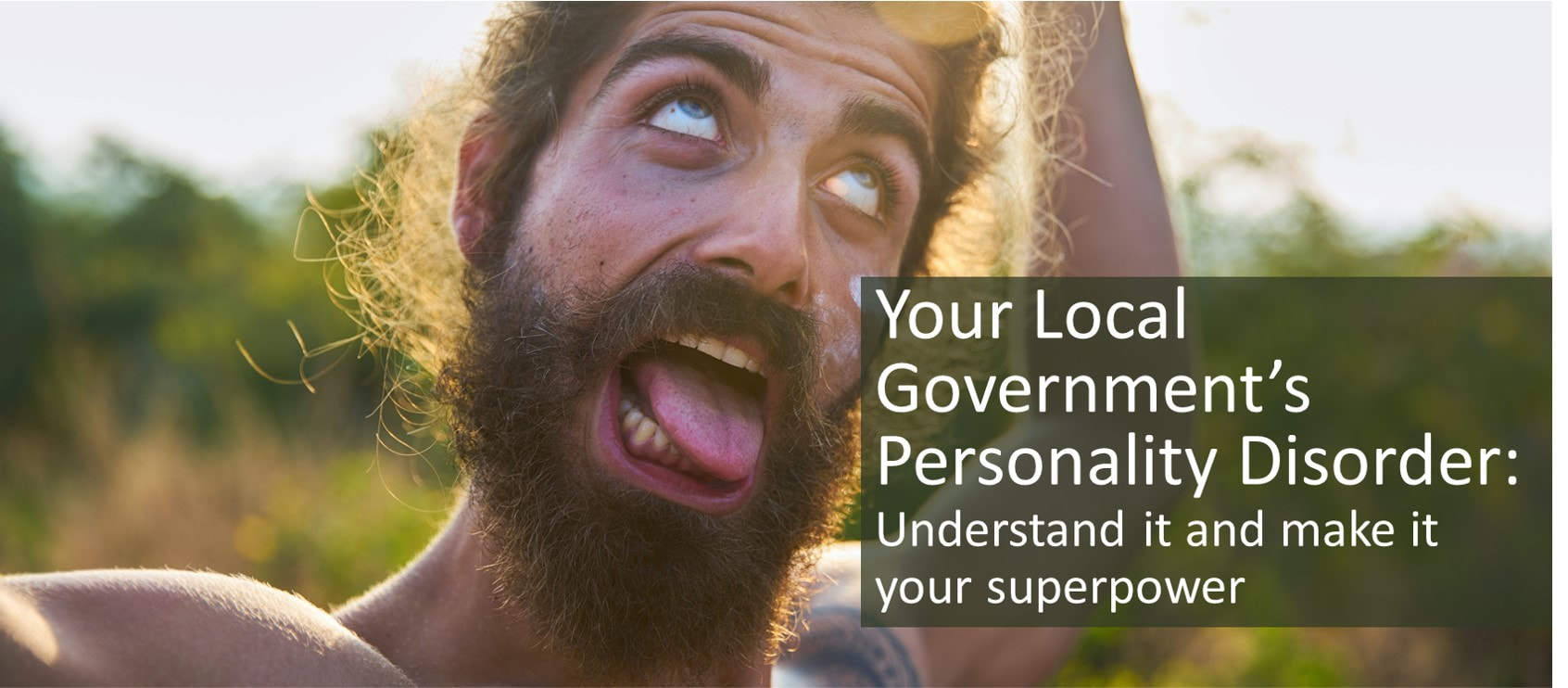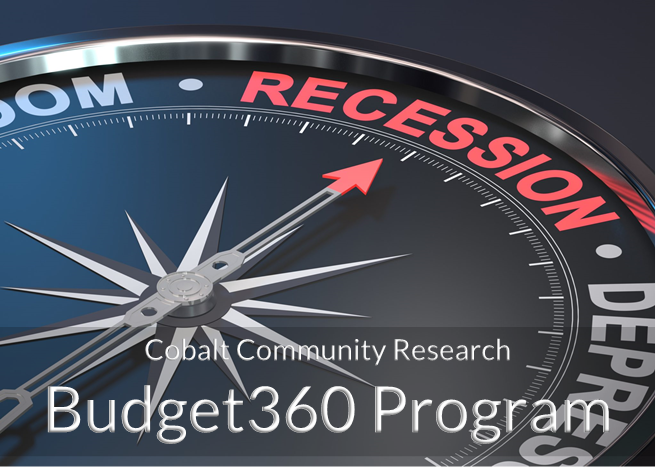|
All organizations have a personality that's perceived by the public. This includes local units of government. If you look around, at all organizations, characteristics are coming through that intentionally or unintentionally describe who they are (or who they would like to be).
The most successful organizations intentionally fine-tuned their brands to hold specific vital characteristics, so they think about keywords or actions they provide. These organizations use something called an archetype. Initially noted by Plato and then popularized by psychologist Carl Jung, archetypes have morphed into personality types, behavioral profiles, and enneagrams. But the root concept remains. You will see archetypes echoed in everything from athletic shoe ads to Star Wars characters. They are mythic. They hook our imagination. When they are clearly and consistently communicated, they carry tremendous influence on public perception and behaviors. You can use this to strengthen the brand of your community. There are 12 general archetypes: 1. Innocent 2. Sage 3. Explorer 4. Outlaw 5. Magician 6. Hero 7. Lover 8. Jester 9. Everyman 10. Caregiver 11. Ruler 12. Artist/Creator Let's start going down the list. The Innocent The Innocent archetype actively seeks happiness. It expresses unyielding optimism and works to be a very positive energy source in the world. The innocent seek out harmony in their lives and for others as well. A clear example of the Innocent archetype is Dove. Its logo, a dove, represents purity and happiness. Dove's ads promote happiness in oneself instead of promoting products that make you "more beautiful." Dove has taken on the message that "everyone is already beautiful, our product will not change that, but we will support your natural beauty." They were the first beauty company to take the approach, and sales broke the charts. Communities do this with communication themes such as "Beautiful place for beautiful people" or "Harmony Welcomes You." The Sage The Sage often appears as the "wise old man." Wisdom fills them. People seek them to find answers in troubling times. They help you find enlightenment in a deceptive world. They are guides for seekers of truth. Think Obi-Wan Kanobi and Yoda. When identifying the Sage archetype, you must think about big questions. TED (Technology, Entertainment, Design) and the Pew Research Centers exemplify the Sage. People turn to these organizations to provide answers, data, and wisdom. Communities do this by communicating themes such as "data-driven decisions" and "evidence-based management." The Explorer The Explorer values freedom, adventure, and independence. Explorers have a very independent and resourceful nature. They come a crossed as being well-cultured and intelligent. Their biggest fear continues to be being trapped somewhere in life. Brands like The North Face and Patagonia remain some of the most significant explorer types there are. They take the lead in adventure and craft gear that makes each adventure stylish and safe with the tools that aid outdoor enthusiasts. Communities express this archetype by communicating messages such as "where discovery awaits" or "experience the adventure." The Outlaw The Outlaw comes across as the misfit. They love to rebel against society's norms and loathe following the textbook of life. Outlaws become icons in their time; they love a good revolution, putting them at the front of the action. Outlaws like to drive change in the world -- and they do it the unconventional way. Harley-Davidson roars to mind as a top rebel brand. They have been driving outlaw archetypes to resonate with other like-minded individuals. Bringing these societal 'outcasts' together allows its consumers a sense of belonging and high confidence to face whatever challenges the world brings. Communities striving to express this archetype communicate messages such as "dare to be you" or "live free or die." The Magician The Magician exists as the visionary of the world. They become fascinated with life and its potential; they want to push the boundaries of what impossible truly means. They tend to be secretive with information and naturally curious about acquiring more knowledge. Think Elon Musk. The most prominent representation of the Magician, in the modern-day, would be Disney. They captivate the entire world by their cinematic creations, the over and above theme parks, and the out of this world events they sponsor. Nothing seems impossible at the "happiest place on earth." The Hero The hero comes into the world when everything seems lost. They want to battle the "monsters" in the world. Every hero goes through their own "epic tale," and their key characteristics continuously gain a new and mature perspective. Think about the montage in the Rocky movies. The hero's archetype can be seen crossed many different organizations today. One that comes to mind would be the American Red Cross. They continuously break through the limitations of life. Working to provide and protect the health of America, their employees work hard to grow as individuals. Communities utilizing the hero theme communicate themes such as "be all you can be" or "you can make a difference here." The Lover The Lover archetype has the most extraordinary ability to handle intense feelings. With a solid grasp on their sense of self, they forge deep emotional connections. Through their lens of life, they find great passions. Lovers provide forgiveness. Think your best friend or significant other. A community that showcases their lover side in their motto would be Clawson, MI. Where their phrase says, “The Little City with a Big Heart.” The Jester The Jester thrives on being an entertainer. They succeed in finding joy in everyday tasks. Jesters live on the go and restlessly wonder. These individuals stimulate energy in group settings and conversations. Their sense of humor allows for hardships to roll off their shoulders. Think of the character Mayhem from AllState Insurance or Tywin Lannister from Game of Thrones. Like court jesters in medieval times, today's business finds a way to wiggle humor into commercials and product labels. Some prime examples include Old Spice, M&M's, and AllState Insurance. Jesters seek the spotlight; they live for attention. Their humorous outlook on life allows them to stand out in a crowd. Consumers who purchase their products tend to remember the laughs they had from commercials. Communities bringing out their sense of humor include places like Hell, Michigan, where their tagline is "Go to Hell!" or Telluride, Colorado, where they say, "To-hell-you-ride." The Everyman The everyman enjoys the simpler things in life. They want to avoid the pretense of being elite; equality remains critical. They value an even playing field. Respect and reliability integrate themselves into an everyman's values. Teamwork ranks high on their priority list; a genuine attitude follows them. Think back to the movie Dodgeball and Average Joes Gym. Brands that want to blend in are those of IKEA and Target. They want to be seen as the place where everyone goes. The bandwagon effect and family-friendly orientation draws in consumers of all ages, walks of life, and styles to find something in their offerings. Communities like Gun Barrell City, TX, uses its name and slogan to blend in with the stigmas of Texas with their saying, "We Shoot Straight With You." The Caregiver Stand back… the caregiver has arrived. They prioritize helping others above everything else. Their drive to protect the people closest to them is overpowering. Some of the most compassionate people on the planet fit into the caregiver category. They showcase an overwhelming amount of concern or emotion at times. But even then, consistency and trustworthiness become their top traits. Think nurses, teachers, and mentors. The business world's Caregivers have found a unique spot to tell their stories; brands like UNICEF, TOMS, and other non-profits keep the world on its feet by aiding those who need it. They strive to help fix the world's issues and want to assist in any way they can. The caregiver can be seen in communities like Livonia, MI, where their phrase state, “Livonia: People Come First.” The Ruler The ruler brings order to their community. Rulers usually occupy senior positions in the workplace. They tend to acquire a social awareness of their image. When speaking, they project authority. Armed with a multitude of skills, rulers can be very charismatic and natural-born leaders. Think Fred from Scooby-Doo. Communication themes include process, structure, order, accountability, and stability. Places like Havre, Montana use direct phrases like "Get'er Done" and Independence, Missouri states, "Where the Trails Start and the Buck Stops." The Artist/Creator Artists observe life. Curiosity and desire drive them to figure out how the world works. An artist's appearance voices self-expression rather than trends; their outlook on life often accentuates eccentric thought processes. Artists drive the fine arts and gravitate to innovation. Think Steve Jobs. Consider the creators of the world: Apple, Lego, and Adobe. These creators resist standing still and work on improving the status quo. They hunger for change. Their passions include new and exciting ventures. They strive to create value in new ways. Mottos seek to inspire artists to move to them with slogans like "A city full of life" or "Creativity runs in our veins." Conclusion Archetypes appear in almost every part of life: between people, in groups, movements, government, businesses, organizations, religion, communities, and many more. They bring personality and energy to the moving parts of the world and attract individuals to them. Understanding and recognizing archetypes help identify the thoughts, actions and results from an organization. It allows a unique inside glance at the human side of human work. Archetypes can showcase hard work, determination, creative thought, love, care, humor, magic, mystery, and wholeness. Communicating themes based on your deliberately selected archetype will level up your ability to attract like-minded people. Opening your eyes to archetypes will open your heart to the world. |
"Understanding a persons actions requires an understanding of their personal self."
Further reading
|
For more information on how Cobalt can help you adapt and thrive in the changing demographic, economic and social environment, visit the Cobalt website or reach out to us by email. Let us know if you need anything at all for benchmarking or research data; we are here for you.
Cobalt Community Research is a national 501c3 nonprofit, non-partisan coalition that helps local governments, schools and membership organizations measure, benchmark, and affordably engage communities through high-quality metrics, mobile geofencing data, surveys, and dynamic population segmentation. Cobalt combines big data with local insights to help organizations thrive as changes emerge in the economic, demographic and social landscape. Explore how we can help by calling 877.888.0209, or by emailing [email protected].
Cobalt Community Research is a national 501c3 nonprofit, non-partisan coalition that helps local governments, schools and membership organizations measure, benchmark, and affordably engage communities through high-quality metrics, mobile geofencing data, surveys, and dynamic population segmentation. Cobalt combines big data with local insights to help organizations thrive as changes emerge in the economic, demographic and social landscape. Explore how we can help by calling 877.888.0209, or by emailing [email protected].






